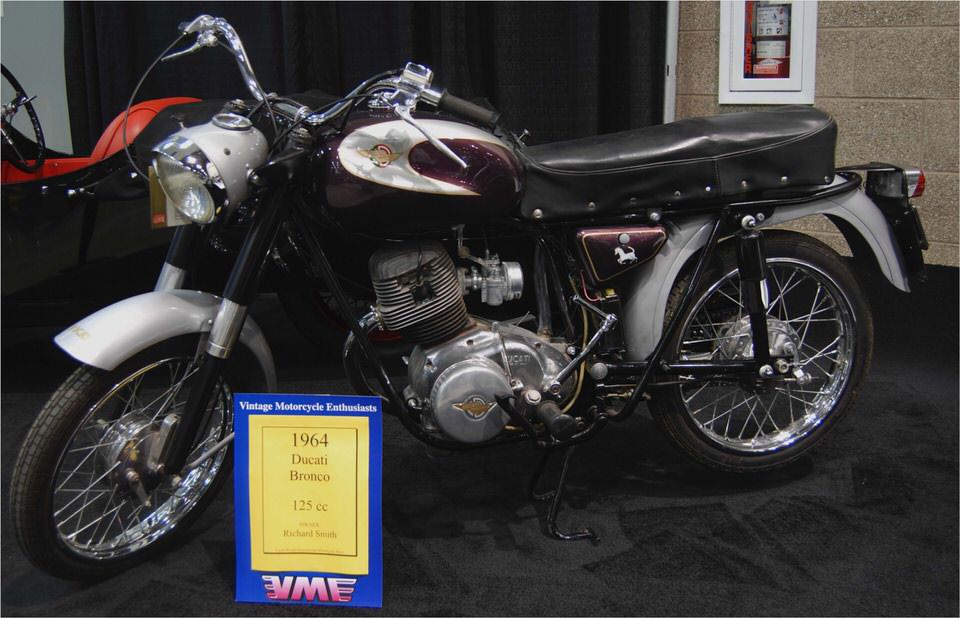
The Ducati Museum is centered within a round rotunda located on the top floor of the front office building of the Ducati factory complex. Together with a factory store, and a factory tour, it is open to visitors year ’round except for the holiday closure all the month of August. Here is the modern Superbike exhibit with all the World Championship winning bike’s from the 1990’s.
A Visit to the Ducati Museum
Story and Photos by Jim Gianatsis
The Ducati factory is located in the city Bolognain the suburb of Borgo Pamigale just off the main A-14 Autostrada (not too far from the Ferrari factory at Modena) and is open to pubic tours throughout the week. There are no set times for factory tours as visitors may vary at different times of the year, so tour guides may be pulled away from their other office duties at the factory as needed. Also know that most European companies like Ducati close in August for summer vacation.
Visitors do need to check in with the security guard at the front gate of the factory, and it probably is a good idea to phone ahead just to make sure you are coming at a good time. The Ducati factory with its guided public tour of the motorcycle production line, the Ducati Musuem, and the opportunity to dine in the Employee Cafeteria and shop in the DucatiStore and Close-Out Apparel Shop are open to all visitors free of charge. Only my visit to the Corse Race Shop was a private by invitation only to FastDates.com, which you can see and read about HERE .
A very compact and modern Ducati table radio from 1948. Ducati was a world leader in radio technology from before Word War II. Note the plastic knobs and face panel.
Ducati was origionally founded by the 3 Ducati brothers, Marcello, Adriano and Bruno back in 1926 in Bologna, Italy, who were pioneers in radio design. The began by manufacturing condensors and other radio components sold around the world, expanding into lenses and cameras up until 1943 amid World War II when Italy signed an Armistice with the allies. However the Germans looted the factory of much of its machinery at that point, and a year later the factory was destroyed by allied bombing.
The bothers tied to rebuild after the war, but went bannkrupt in 1947. Because of the company’s importance of the company to Italy’s economy the company was rescured financially by the Italian government, and for the next 40 year’s in would be affected by good and bad political control.
During the 1980’s Ducati was under the control of the private inustrial VM Group, but was run poorly and never proved to be profitable. In 1984 the VM Group entered into a joint venture with Cagiva motorcycles in an attempt to increase profitability. In 1985 Cagiva, owned by the Castigolioni brothers Claudio and Gianfranco, took over Ducati altogther and tried to produce both brands of bikes sharing some components.
Things ran well for about 10 years, but in the mid 1990’s suppliers were not being paid and bike production dripped from 21,000 in 1995 to 12,500 in 1996. In 1996 a joint venture between the Texas pacific group and other investers created the publicly traded company Ducati Motor S.p.A. which is what runs the company very successfully today. Bike production has increased in 2004 to an all time historial high of 40,000 units a year.
Ducati’s first engine was the 48cc 4-stroke Cucciolo with exposed vales, origionally produced in 1946 as a bolt-on bicycle kitengine to provide affordable and fuel efficient motorized transportation after World War II. This museum example of the T2 model in 1948 has it installed from the factory in a complete bicycle with working rear suspension and drum brakes.
Ducati’s motorcycle history began with the ‘Cuucciolo’ (puppy) an inexpensice 4-stroke engine designed for Siata of Turnin during World war II by a layer named Aldo Farieello. the end of the war in 1945 proved to be a very opportune time to produce such a montor which could be installed in a bicycle frame to provide very inexpensive transportation to the population who were recovering from the war without much money or work. Somehow the Ducati factory picked up the contract to produce these engines. The engines and resulting bikes became so successful as to become the cornerstrone of Ducati’s revival.
The Ducati Museum cronicals the company’s history from just after World War II from the very beginning of it’s motorcycle histroy with the little 48cc Cucciolo engine right up to the presnet day World Championship winning 999F Superbikes. Ducati’s involvement with racing began almost immediately in 1950 with a Cucciolo powered motorcycle which is on display in the Museum, and racing has always been the focal point of the company for self promotion and new production bike developemnt. The Ducati Museum reflects this in that the majority of bikes on display are factory racing bikes from 1950 until today.
The tiney Cucciolo bicycle moped evolved into a full racing motorcycle in 1948 with its own frame featuring a sprung girder front forks, racing seat, and a real motorcycle fuel tank. The engine head now had enclosed valves.
Our tour guide for the factory and museum was a lovey young girl with an easy going personality who loved to answer questions, knew almost everything about everything from engine assembly to production numbers, and loved to joke and kid around with us.
The 125cc Gran Sport introduced in 1955 was a very successful racing bike producing 14hp and winning the Giro d’Italia roadrace in 1956. It was a development of the first overhead cam bevel drive engine developed in 1955 by a newly hired company engineer named Fabio Taglioni. It was Taglionoi who wouldlater introduce desmodronics to Ducati and motorcycling some 10 years later.
Ducati’s first overhead cam bevel drive production bike was this 175cc Sport of 1975.
Our tour this day included a special private tour of the Ducati Corse Race Shop hosted by Superbike Press officer and freind Jullian Thomas. Access to the Race Shop is not a regular part of the Factory Tour, and is off limits to the public, visiting Ducati dealers, and even other Ducati employees.
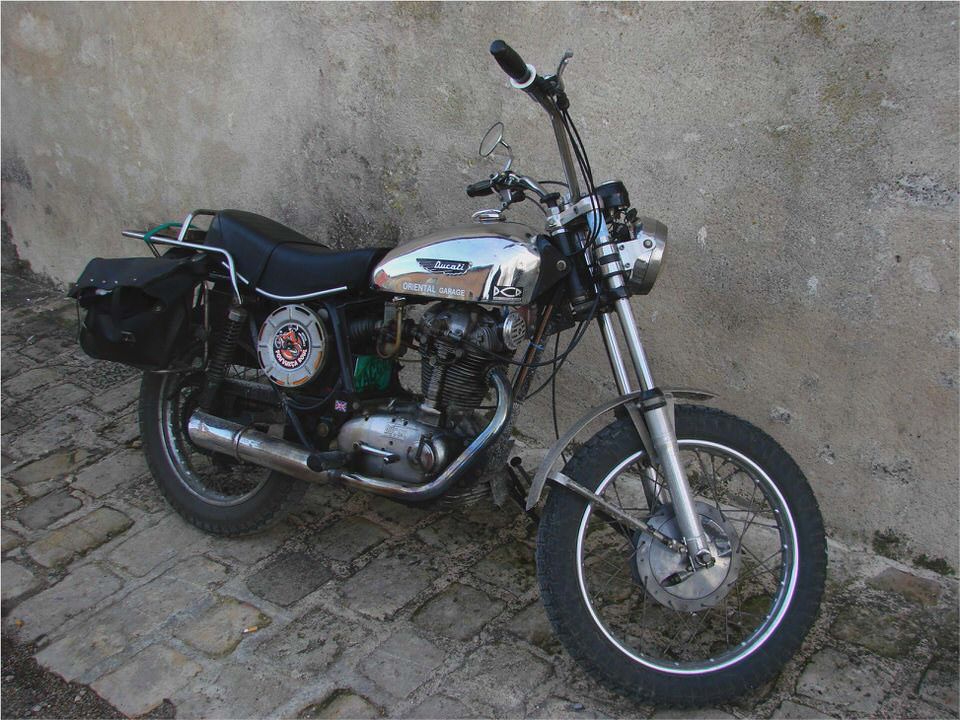
It’s not because the Race Shop has many secrets to hide, but more for all the expensive parts and equipment lying around in the open and the mechanics’ needing to be able to concentrate on the important prepartion of the race bikes without distraction. The special relationship that FastDates.com shares with Ducati Corse in featuring their bikes in the Calendar, the fact Pit Lane News offers the web’s best coverage of motorcycle roadracing, and loaning them our beautiful Calendar girls to be the official Ducati Corse umbrella girls at Laguna Seca each year was what allowed me and my group into the race shop. You can follow our Ducati Corse race shop visit HERE .
Marco Lucchinelli’s 1988 World Superbike, the 851cc Desmo motor stuffed into a 750F1 style chassis saw 200 examples built to homologate it for the new World Superbike Championship that year. The initial protype to this bike won the Daytona battle of the twins race in 1987. Power was 120hp.
The beginning of the 916 generation of World Championship winning Ducati Superbikes from Carl Fogarty’s World Championship winning #9 of 1994 (actually 955cc) to Troy Corser’sWorld Championship winning #2 of 1966 (actual 996cc).
The current end of the line of Ducati’s World Championship winning Superbikes runs from Carl Fogarty’s runner-up bike in 1997 to the new generation 999F03 of Neil Hodgson in 2003. By now, James Toseland’s 2004 winning 999F04 has also been added at the far end. No doubt, the mueum will need to be expandedvery soon.
The Ducati Museum offered a few new suprises like this prototype 3-cylinder DOHC superbike motor from the early 90’s.Note the quick change cassette transmission cover to the rear of the engine. And the very compact cylinder head / engine combining the heads and cylinders in one casting.
Our morning tour of the factory ended just in time to join many of the factory employees and management in the Ducati factory cafeteria for lunch. The cafeteria is a beautiful new modern facility with a hi-tech theme and Ducati racing murals around the ceiling. The menu included fresh cooked pasta dishes, salad, and a beverage choice of just bottled Italian water, wine or beer.
Which made us think the best time to plan for our next new Ducati motorcycle to get built is in late spring when production is slower, and in the morning before lunch.
Joining us for lunch at our cafeteria bench table was none other than Ducati company president Carlo Biaggio and chief motorcycle designer Pierre Tremblance. We felt like an important part of the Ducati extended family, a tradition here and thoughout Italy. Later in the week back at Misano, Carlo and Pierre and much of Ducati management would be serving dinner to thousands of enthusiastsfrom around the world at World Ducati Week.
On our way out of the cafeteria after lunch, just across the hallway is the Ducati clearance store where yuou can by close out Ducati apparel at low discount prices. This is where most of the Ducati factory employees shop Ihink, becausealmost all the factory workers wear Ducati ed T-shirts and jeans. Where as all Ducati management and office employs ware plain white dress shirts with black slacks.
The Ducati factory cafeteria: Let’s see. I’ll take the pasta with a beer, or maybe a wine? It doesn’t take a program to spot visitors in blue, factory workers in red, and office workers or management in white shirts.
If you are a hard core Ducati collector primarily interested in the company’s history of street production bikes, the Museum will not satisy you as it does not have room for a big collection of stock production bikes. Instead it does do a good job of focusing on the company’s most historically significant racing bikes, which is what any hard core sportbike fan would want.
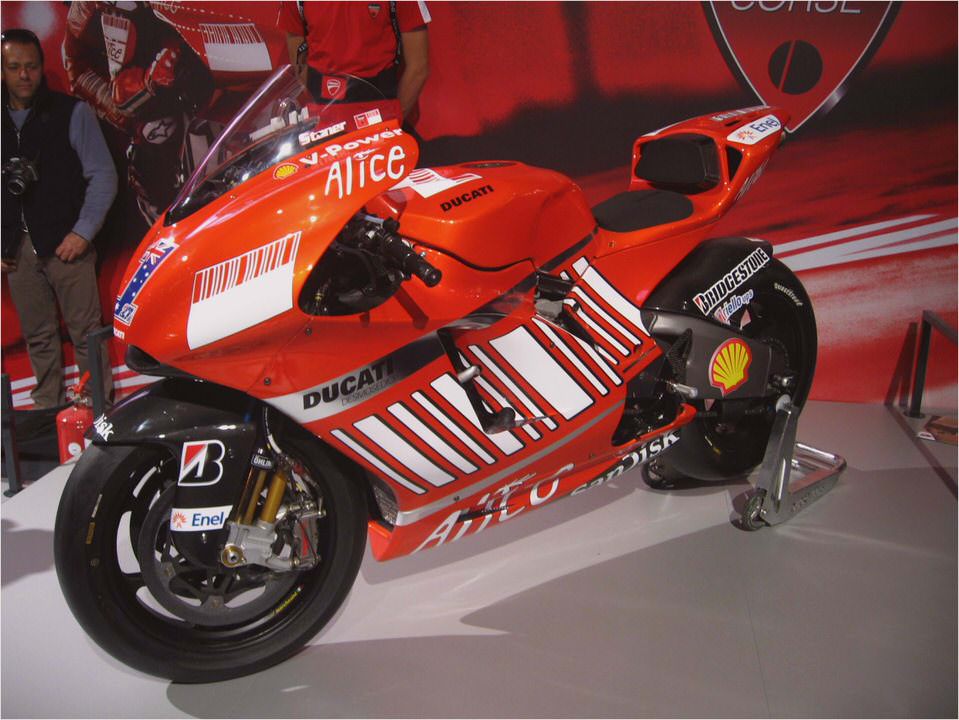
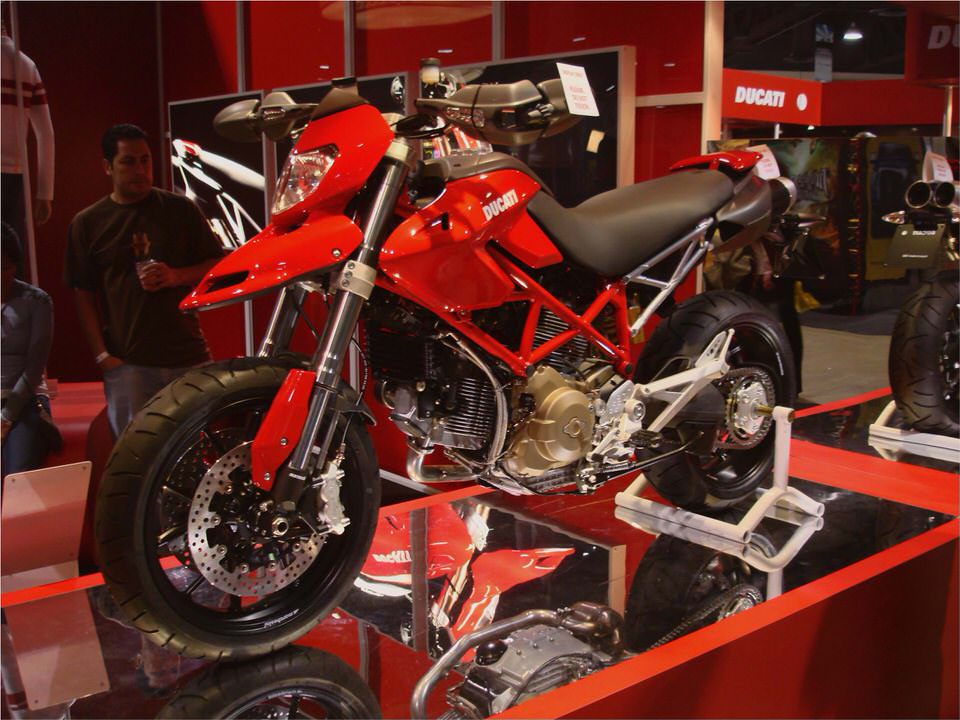
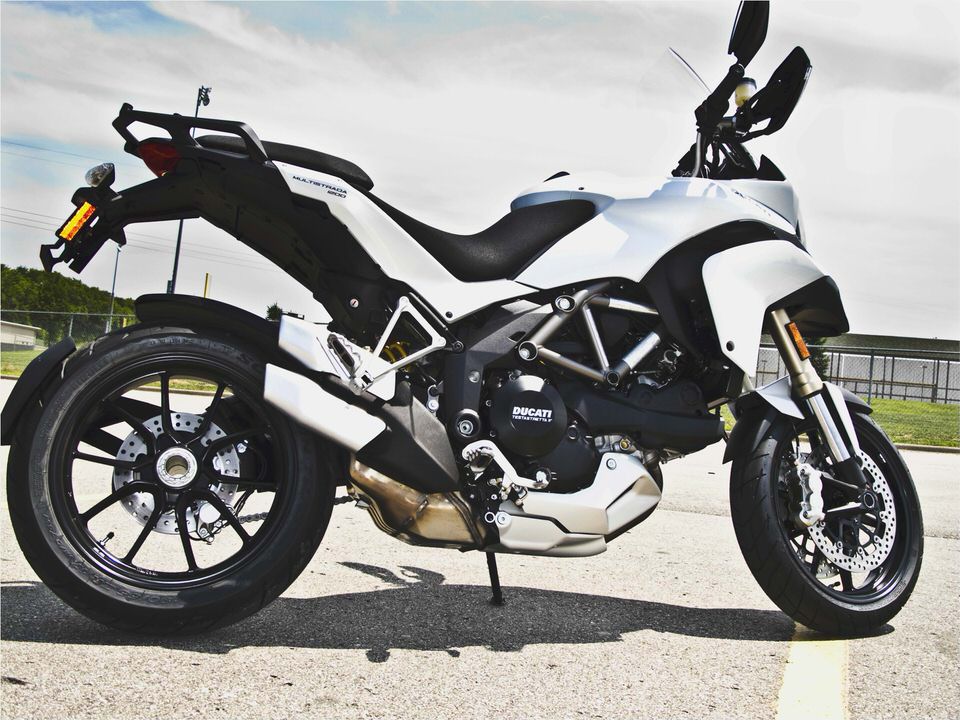
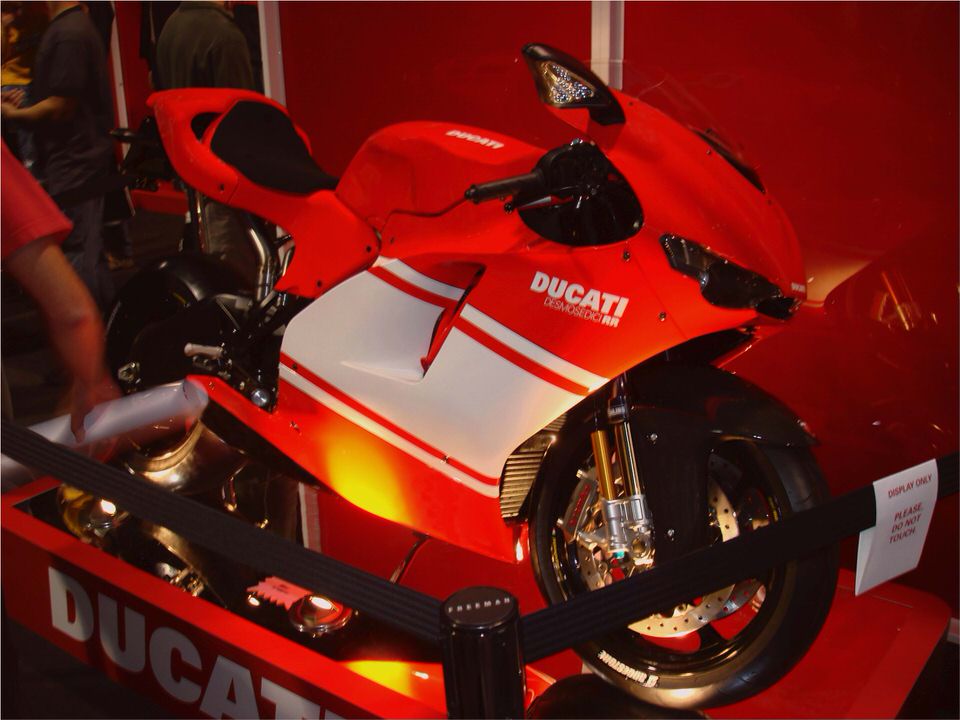
- 1952 Cyclotandem Camille Daudon powered by Ducati Cucciolo 48cc www.Oldbike.eu
- Ducati: it’s going to take time – MotoGP – Motor Sport Magazine
- 1975 Ducati 860 GT
- Buy 1979 Ducati 900 SS, Ducati Bevel, Ducati 900 Super on 2040motos
- 2010 Ducati Monster 1100/1100 S motorcycle review @ Top Speed

